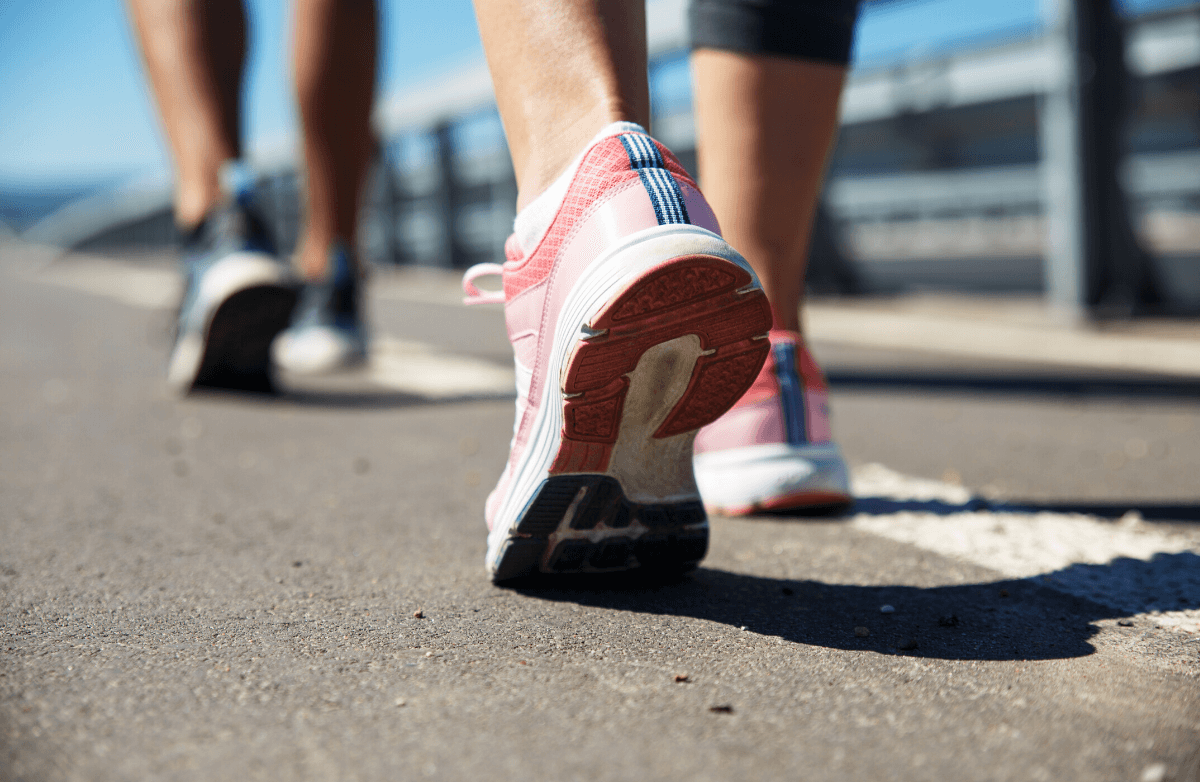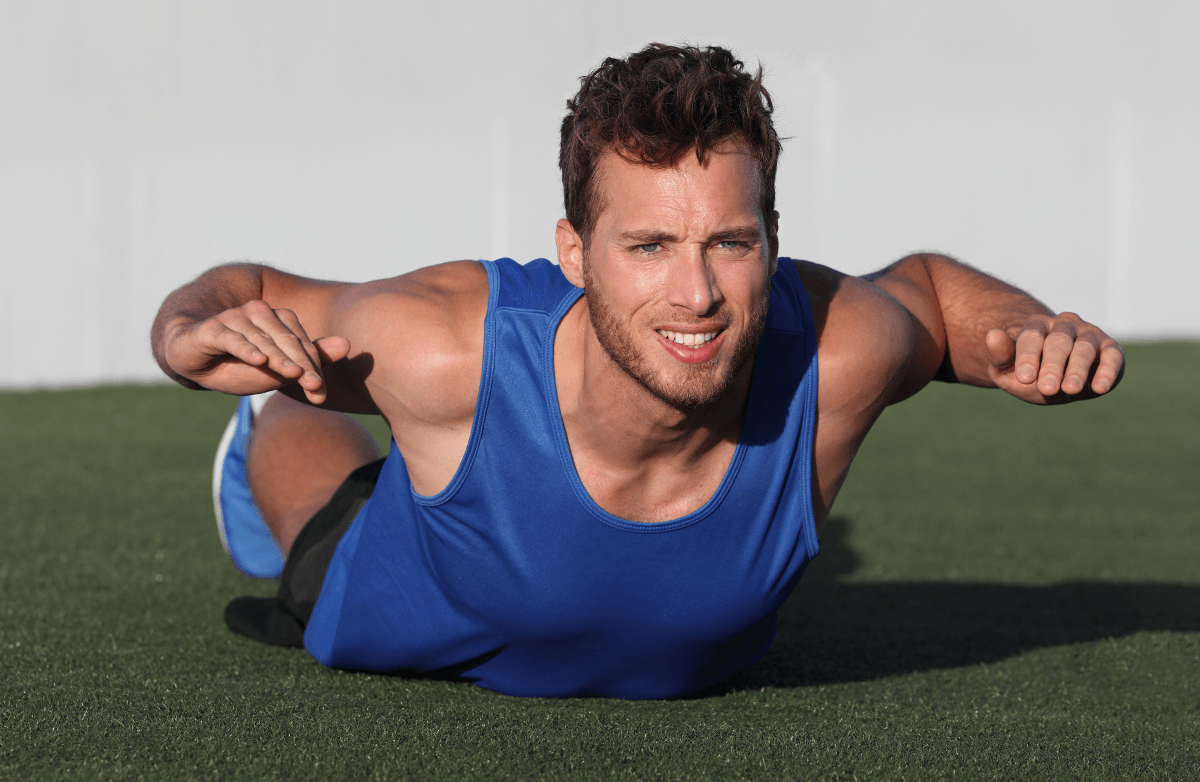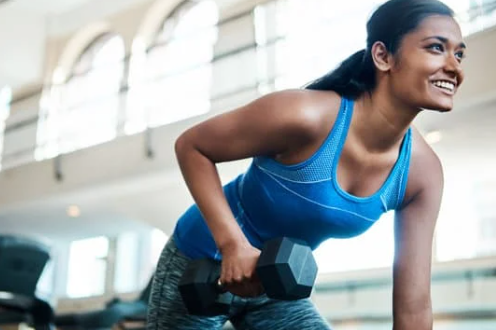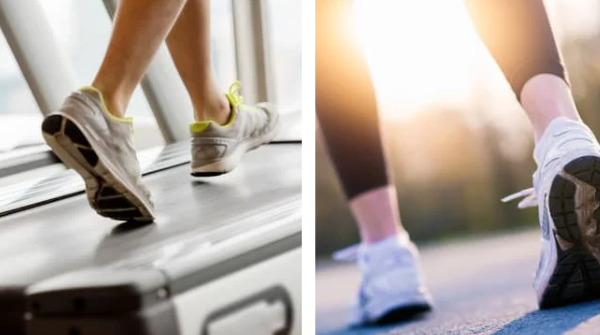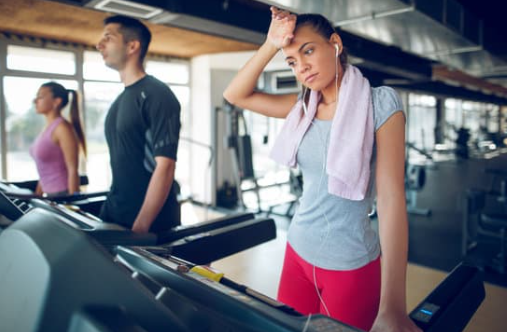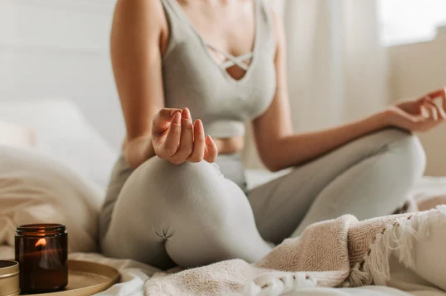A woman's breasts are composed primarily of adipose (fatty) tissue, mammary glands, connective tissue and the Cooper’s ligament, which keeps the breast firm and prevents sagging. Because the underlying chest muscles do not support breast tissue, exercising in anything other than a well-fitted sports bra can stretch the Cooper's ligament, leading to greater sagging and even pain during exercise.
Finding the right sports bra can be a daunting task when there are hundreds of styles from which to choose! Don't worry—we've done the homework for you. Believe it or not, just any old sports bra won't supply the support you need to prevent sagging, stretching or pain related to exercise. One size certainly doesn't fit all.
Studies have shown that between 70 and 80 percent of women are wearing the wrong size sports bra, and, therefore, they may not be getting the benefits of support and comfort from their fitness wardrobe. Many department stores, including Nordstrom or Macy's, offer free fitting services for customers. But if modesty is a concern, you can take your own measurements before leaving home. Measuring can save you lots of time and aggravation when choosing the right bra.
To take your own measurements:
- Use a tailor’s tape or cloth measuring tape when taking your measurements.
- Stand up straight, preferably in front of a mirror.
- Wear a normal (non-padded) bra, not a sports bra, when taking your measurements.
- Find your bust measurement. Wearing a non-padded bra, measure the fullest part of your chest by loosely wrapping the tape measure around your chest, making sure the tape is straight in the back and front. Once you get a number, round to the nearest whole number to get your bust measurement.
- Find your band measurement. Measure your ribcage just under your breasts, making sure the tape is
snug (not tight) and not lower in the back than in the front.
Your Measurement (in inches) 27" 28-30" 31-33" 34-36" 37-38" Band Size 30 32 34 36 38
Past a meaurement of 38 inches, the band size will be the closest even number to your measurement. - Find your cup size. Subtract your band measurement (step 5) from your bust measurement (step 4). Use the chart below to determine which letter is your cup size.
( However, the chart becomes less accurate once you get past a 4-inch difference.)
Bust – Band difference Cup Size 1/2" AA 1" A 2" B 3" C 4" D 5" DD or E 6" F 7" G
- Put your band size with your cup size and you have your bra size. Remember, though, that this is just a starting point to help you narrow
down which options to actually try on.) <pagebreak >
- For what types of activity are you going to wear this sports bra? High-impact exercises, such as running, step aerobics or hiking require a different style and support construction than you'd need for low-impact workouts like cycling, yoga or Pilates.
- Will you wear your sports bra for outdoor or indoor exercise? While this may be a strange detail to consider, some women prefer to wear a sports bra without a shirt when exercising indoors. In doing so, look for a bra made of sweat-wicking, breathable materials as well as nice detailing.
- Does this sports bra fit your individual body structure? Choose a bra that fits your body size and shape. Wearing a bra that doesn't fit for your breast size and/or rib cage measurements may lead to discomfort and chafing.
- Compression Sports Bras (the one piece style that you pull on over your head) are by far the most popular sports bra construction. This bra compresses both breasts against your chest, allowing for minimal or no-bounce movement. These bras are generally a pullover style without fasteners. This style is most suited for women with small to medium sized breasts (A-B cups). These tend to come in general sizes, such as small, medium and large vs.
band /cup sizes. Most major manufacturers, including Champion, Moving Comfort, Under Armour, Reebok and Nike, carry a wide variety of compression sports bras from which to choose. - Encapsulated or Natural-Shaping Sports Bras are best suited for larger breasted women, usually a C-cup or larger. These bras look more like a normal bra with fasteners in the front or back, and may come with or without the
underwire . This style encapsulates each breast in an individual cup instead of compressing both breasts together as in the previous example. The encapsulated sports bra is the best choice for larger-breasted women (C-cup and up) or plus sized women. - Compression/Encapsulation Sports Bras are a combination of the previous two bras. They encapsulate each breast and compress the breast tissue against the chest. They can be pulled over the head or closed with fasteners. This style is ideal for women with medium to large breasts, usually
C through DD cups.
- Moisture-wicking fabrics, such as Dri-FIT and CoolMax,
pull sweat away from your skin to help keep you cool and dry, while minimizing chafing. Avoid all-cotton bras—especially if you sweat heavily or exercise in hot, humid conditions—because this fabric tends to remain wet and saturated even after your workout is over. - Minimal seams or covered seams, especially in the cups, to prevent chafing and irritation. Every seam on a sports bra could rub against your skin, so the fewer seams the better.
- Wide straps that do not dig into your shoulders. Many women, especially runners, prefer the popular
racerback style since this design allows for greater arm movement and provides greater support. However, a traditional scoop style is a readily available alternative for women who find the razorback style uncomfortable. - A snug fit around the rib cage allows for minimal movement, but the band should not be so
snug as to keep you from gettinggood lung expansion during your activity. Your sports bra should feel snug—not tight. - Deep armholes to minimize chafing yet allow for good range of motion. <
pagebreak >
Finding the Right Fit
It is very important to try on a sports bra before you buy it. Most experts recommend that you take a minimum of three sports bras with you when heading to the fitting room. You should bring the size you measured, along with the next size up and the next size down. Because sizes can vary between manufacturers, it is important to try on many different brands and styles in order to find the optimal fit. You know you've got the right size, style and fit when:
- The straps fit
snug against the skin, but aren't so tight that they dig into your shoulders. You should be able to slide two fingers underneath the straps—from the front to the back of the straps with ease.
- The band lies snug and flat against around the front, sides and back of your rib cage. It should not ride up. You should be able to slide one finger easily under the band.
- Your breasts fit within the cups. In other words, any bulging from the top or sides is an indication that the cup size is too small.
- The fabric does not "gather" in the cup, especially on top. Excess fabric bunches are usually an indication that the cup is too big and will not provide adequate support and comfort. This can also cause chafing during activity.
Taking Care of Your Investment
A high-quality sports bra can easily set you back between $25 and $70, but for most women, it's a well-made investment. Depending on the frequency of wear and the care you give to your garments, a single sports bra can last between six and 12 months—maybe longer. Therefore, you will want to use extreme care when it comes to laundering your undergarments. Most experts recommend hand washing a sports bra with a mild detergent after every wear. New sports detergents are good options, too. Not only do these specially designed detergents help to eliminate embedded odors, but they also help retain the sweat-wicking properties of your sports apparel. And while it may be tempting, never place your sports bras in the dryer since the heat can break down the elastic, thereby shortening the useful life of your bra.
How do you know when it is time to say good-bye to your sports bra? While the useful, supportive life of your sports bra depends on many factors, you know it's time to upgrade when:
- The fabric is losing its shape
- The bra is no longer offering the support it once did
- The fabric is pilling, especially under the arms
- The elastic is stretched out
- You have lost or gained a significant amount of weight



